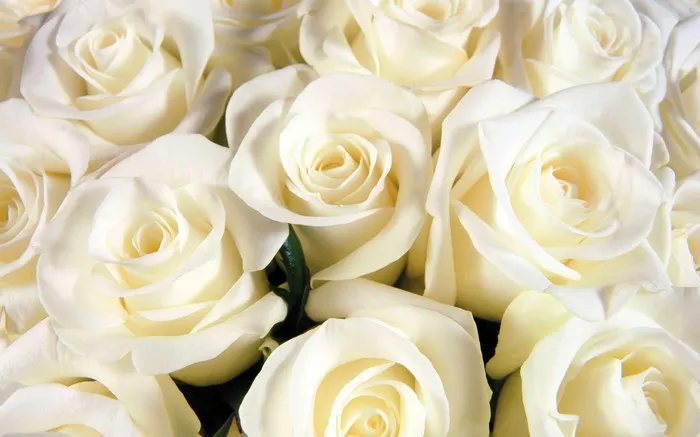The rose, a quintessential symbol of beauty and love, has captivated human imagination for centuries. Its elegance, fragrance, and vibrant colors make it one of the most beloved flowers globally. Beyond its aesthetic appeal, the rose holds deep symbolic significance across various cultures and contexts. This essay endeavors to delve into the multifaceted symbolism of the rose, exploring its cultural, historical, and emotional connotations. Additionally, it will discuss the types of roses, their symbolism, and offer insights into proper care to ensure the longevity of these cherished blooms.
Types of Rose Flowers
Before delving into the symbolism of the rose, it is essential to understand the diversity within this genus. Roses come in a myriad of types, each with its own unique characteristics and meanings. Here are some of the most notable types:
1. Hybrid Tea Roses: Known for their large, single blooms on long stems, hybrid tea roses are classic symbols of romance and elegance. They come in various colors, including red, pink, yellow, and white.
2. Floribunda Roses: These roses produce clusters of smaller blooms and are known for their prolific flowering. They symbolize abundance, vitality, and celebration.
3. Climbing Roses: As their name suggests, climbing roses feature long canes that allow them to climb fences, trellises, and walls. They represent growth, aspiration, and reaching new heights.
4. Miniature Roses: Despite their small size, miniature roses pack a punch with their adorable blooms. They symbolize charm, grace, and innocence.
5. Old Garden Roses: These roses encompass a diverse group of roses with rich histories, including Gallicas, Damasks, and Albas. They are often associated with tradition, heritage, and nostalgia.
6. Wild Roses: Found in nature, wild roses are simple yet beautiful, with single or semi-double blooms. They symbolize freedom, resilience, and the untamed spirit of nature.
Rose Flower Symbolism
The symbolism of the rose is as varied and nuanced as the flower itself. Throughout history, the rose has been imbued with deep meaning and significance, transcending geographical and cultural boundaries. Here are some of the most prevalent symbolisms associated with the rose:
1. Love and Romance: Perhaps the most well-known symbolism of the rose is its association with love and romance. From ancient times to modern-day, roses have been exchanged as tokens of affection and passion. The red rose, in particular, is synonymous with romantic love, conveying deep emotions and desire.
2. Beauty and Elegance: With its exquisite petals and enchanting fragrance, the rose is a symbol of beauty and elegance. Its graceful appearance has inspired poets, artists, and lovers alike, evoking a sense of awe and admiration.
3. Spirituality and Mysticism: In many spiritual and mystical traditions, the rose holds sacred significance. It is often seen as a symbol of divine love, enlightenment, and spiritual awakening. The rose’s intricate layers and unfolding petals mirror the journey of the soul towards inner truth and realization.
4. Hope and Renewal: The rose’s ability to bloom anew each season symbolizes hope, renewal, and resilience. Even in the face of adversity, the rose perseveres, reminding us that beauty can emerge from hardship and darkness.
5. Secrecy and Confidentiality: In ancient Rome, the rose was a symbol of secrecy and confidentiality. The phrase “sub rosa,” meaning “under the rose,” was used to signify a confidential matter or a secret oath. This association highlights the rose’s role as a symbol of trust and discretion.
6. Balance and Harmony: The rose, with its symmetrical petals and balanced form, symbolizes harmony and equilibrium. It serves as a reminder of the importance of finding balance in life, nurturing both the inner and outer aspects of our being.
How to Care for Rose Flowers
Caring for rose flowers is essential to ensure their health, vitality, and longevity. Proper care practices can help roses thrive and produce abundant blooms. Here are some tips for caring for rose flowers:
1. Sunlight: Roses thrive in full sunlight, so choose a location for planting that receives at least six hours of sunlight per day.
2. Watering: Adequate watering is crucial for healthy rose plants. Water deeply and consistently, ensuring that the soil remains evenly moist but not waterlogged. Avoid overhead watering to prevent fungal diseases.
3. Fertilization: Feed your roses with a balanced fertilizer formulated specifically for roses. Apply fertilizer in early spring as new growth begins and again in late spring or early summer to promote blooming.
4. Pruning: Regular pruning is essential to remove dead or diseased wood, promote air circulation, and shape the plant. Prune in late winter or early spring before new growth emerges.
5. Mulching: Apply a layer of organic mulch around the base of your rose plants to conserve moisture, suppress weeds, and regulate soil temperature.
6. Pest and Disease Control: Keep an eye out for common pests and diseases that can affect roses, such as aphids, black spot, and powdery mildew. Use natural or chemical remedies as needed to control infestations and prevent damage.
By following these care tips, you can ensure that your rose plants thrive and continue to grace your garden with their beauty year after year.
Conclusion
The rose flower, with its timeless beauty and rich symbolism, continues to enchant and inspire people around the world. Whether exchanged as a token of love, admired for its elegance, or revered for its spiritual significance, the rose holds a special place in human culture and consciousness. By understanding the diverse types of roses and their symbolic meanings, as well as practicing proper care techniques, we can cultivate a deeper appreciation for these exquisite blooms and the profound messages they convey. As we tend to our rose gardens, may we also nurture the love, beauty, and harmony that the rose symbolizes in our lives.


